Persia Cluster Textile Market in the Neighborhood International City
Last Updated on July 22, 2025
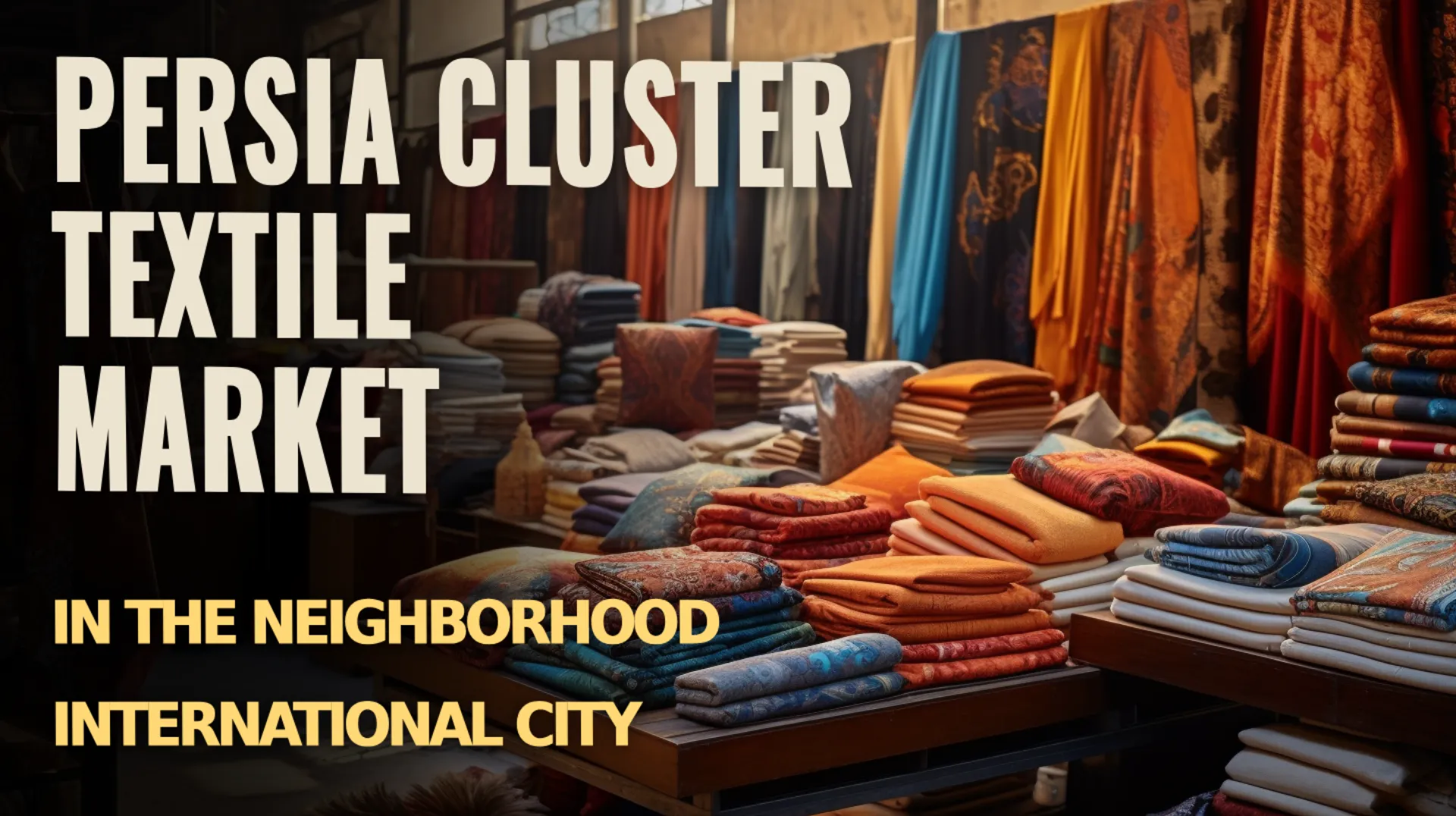
- Introduction to Persia Cluster and Its Textile Market
- Overview of Persia Cluster in International City
- Historical Significance of Persian Textiles
- Exploring the Textile Market
- Diversity of Fabrics and Designs
- Traditional and Modern Textile Blends
- Cultural Significance of Persian Textiles
- Symbolism in Persian Fabrics
- Influence of Persian Art and History on Textiles
- Shopping Experience in the Textile Market
- Navigating the Market: Tips and Tricks
- Notable Shops and Vendors
- Culinary Delights and Local Eateries Near the Market
- Authentic Persian Cuisine in the Vicinity
- Popular Dining Spots for Market Visitors
- Landmarks and Attractions Near Persia Cluster
- Nearby Cultural and Historical Attractions
- Integration with Other International City Clusters
- Conclusion: The Unique Charm of Persia Cluster’s Textile Market
- Summary of the Market’s Appeal
- Encouragement to Explore and Experience
Introduction to Persia Cluster and Its Textile Market
Persia Cluster, part of the more considerable International City development in Dubai, is a fascinating area that beautifully encapsulates the essence of Persian architecture and culture. As a real estate expert who has explored every nook and cranny of Dubai, I can affirm that the Persia Cluster is a unique blend of traditional Persian designs and modern urban living. The cluster features buildings adorned with intricate tiling, vibrant colors, and iconic Persian architectural elements, making it a visually stunning area.
What particularly stands out in the Persia Cluster is its textile market. Known for its wide range of fabrics, from luxurious silks to richly embroidered cotton, this market is a haven for textile enthusiasts. The market’s atmosphere is reminiscent of traditional Persian bazaars, filled with the scent of spices and the sound of bustling shoppers and vendors.
Historical Significance of Persian Textiles
Persian textiles have a long and storied history, renowned for their quality, intricate designs, and the skill involved in their creation. These textiles are not just fabric but a testament to a rich cultural heritage that dates back thousands of years. Persian rugs, for instance, are world-famous for their beauty and craftsmanship, often seen as a symbol of luxury and sophistication.
In the Persia Cluster Textile Market, this historical significance is palpable. The market offers a range of traditional Persian textiles, each telling its own story. These textiles, from handwoven carpets to delicately embroidered fabrics, reflect Persian artistry and history.
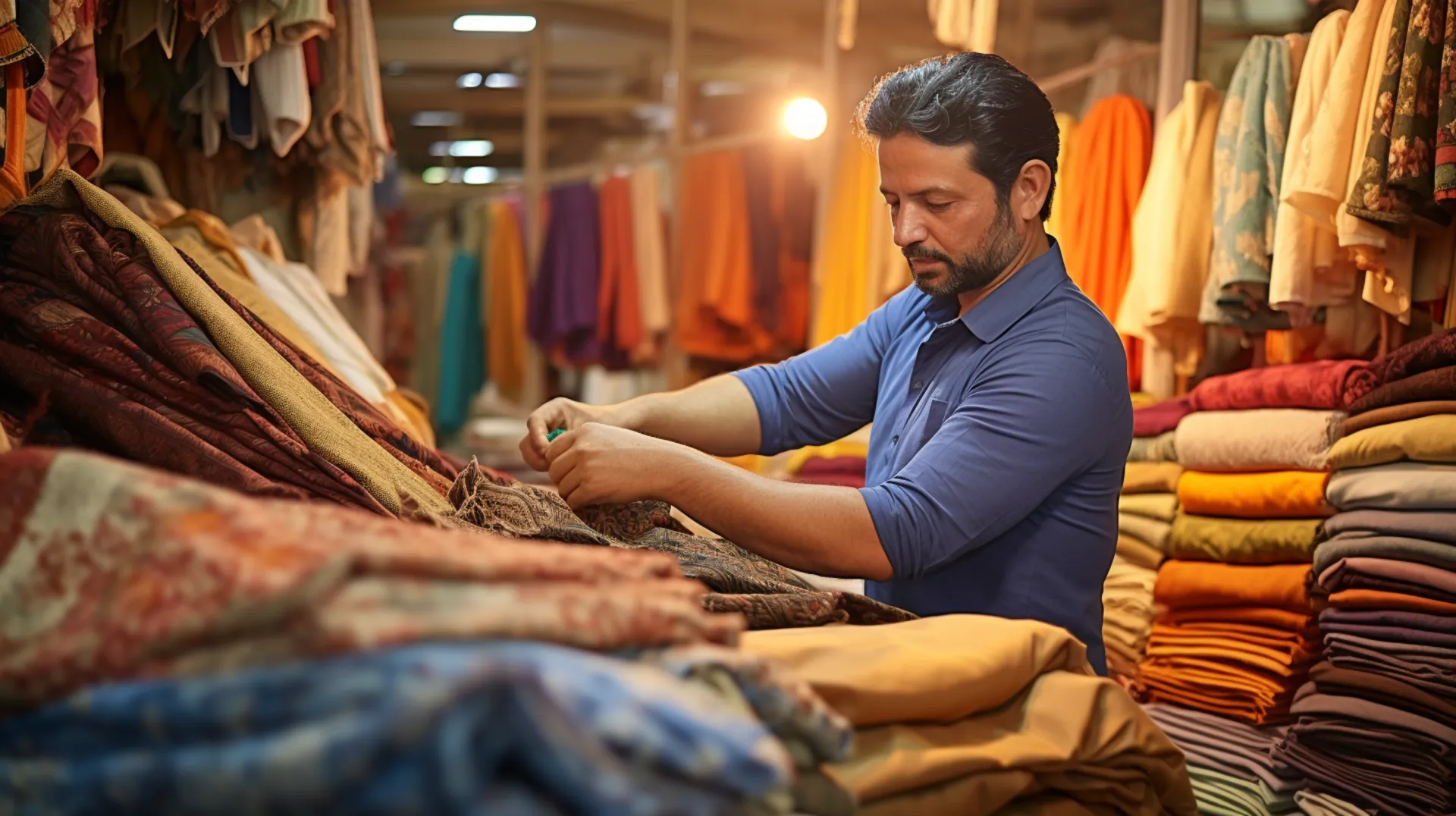
Exploring the Textile Market
Diversity of Fabrics and Designs
The textile market in Persia Cluster is a vibrant and colorful place, showcasing diverse fabrics and designs. As I walked through the market, I was greeted with rows of stalls, each offering a unique selection of textiles. You can find everything from simple cotton fabrics, perfect for daily wear, to luxurious options like silk and velvet, ideal for special occasions.
The designs available in the market are equally varied, ranging from traditional Persian patterns, characterized by their intricate floral and geometric motifs, to more contemporary designs that blend modern trends with classic Persian elements. The prices of these textiles vary, catering to a wide range of budgets. You can purchase simple cotton fabrics for as low as AED 20 per meter, while more luxurious silks and embroidered fabrics can go up to AED 200 per meter or more.
Traditional and Modern Textile Blends
One of the unique aspects of the Persia Cluster Textile Market is the blend of traditional and modern textiles. This mix caters to various tastes and preferences, making it a popular destination for tourists and locals. Traditionalists can find fabrics that reflect the rich heritage of Persian textile art, while those with a more contemporary taste can explore modern interpretations of these classic designs.
The market is also a hub for local designers and tailors who create custom garments from these fabrics. These artisans are skilled in combining traditional Persian textile techniques with modern fashion trends, offering a unique sartorial experience.
In conclusion, the Persia Cluster Textile Market in International City is more than just a shopping destination; it’s a cultural experience that offers a glimpse into the rich tapestry of Persian heritage. As a real estate expert in Dubai, I have seen many markets, but the Persia Cluster Textile Market stands out for its unique blend of history, culture, and modernity. It is a must-visit for anyone interested in textiles, fashion, or cultural exploration.
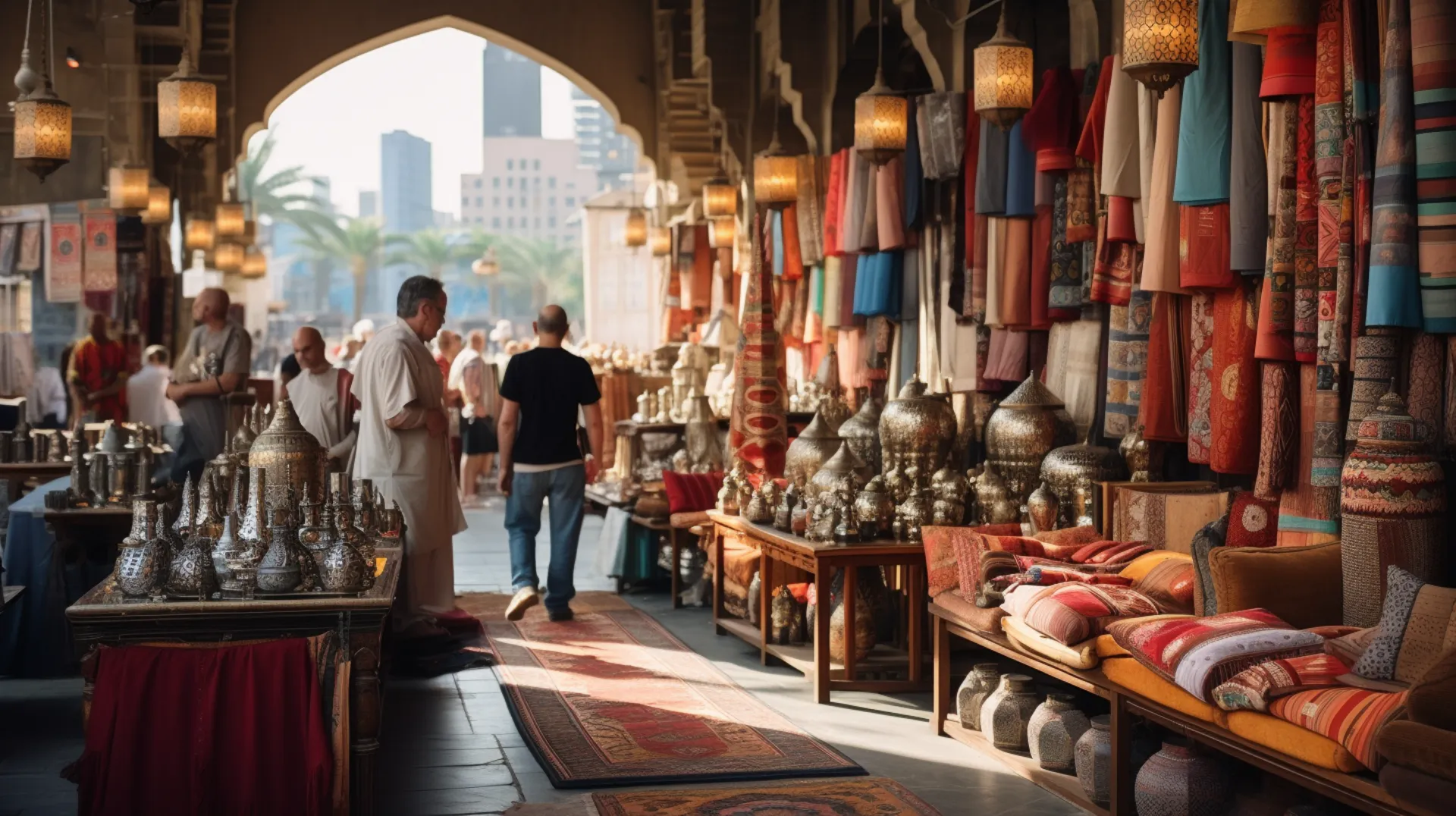
The textile market in Persia Cluster is a vibrant and colorful place, showcasing diverse fabrics and designs. As I walked through the market, I was greeted with rows of stalls, each offering a unique selection of textiles. You can find everything from simple cotton fabrics, perfect for daily wear, to luxurious options like silk and velvet, ideal for special occasions.
The designs available in the market are equally varied, ranging from traditional Persian patterns, characterized by their intricate floral and geometric motifs, to more contemporary designs that blend modern trends with classic Persian elements. The prices of these textiles vary, catering to a wide range of budgets. You can purchase simple cotton fabrics for as low as AED 20 per meter, while more luxurious silks and embroidered fabrics can go up to AED 200 per meter or more.
One of the unique aspects of the Persia Cluster Textile Market is the blend of traditional and modern textiles. This mix caters to various tastes and preferences, making it a popular destination for tourists and locals. Traditionalists can find fabrics that reflect the rich heritage of Persian textile art, while those with a more contemporary taste can explore modern interpretations of these classic designs.
The market is also a hub for local designers and tailors who create custom garments from these fabrics. These artisans are skilled in combining traditional Persian textile techniques with modern fashion trends, offering a unique sartorial experience.
In conclusion, the Persia Cluster Textile Market in International City is more than just a shopping destination; it’s a cultural experience that offers a glimpse into the rich tapestry of Persian heritage. As a real estate expert in Dubai, I have seen many markets, but the Persia Cluster Textile Market stands out for its unique blend of history, culture, and modernity. It is a must-visit for anyone interested in textiles, fashion, or cultural exploration.
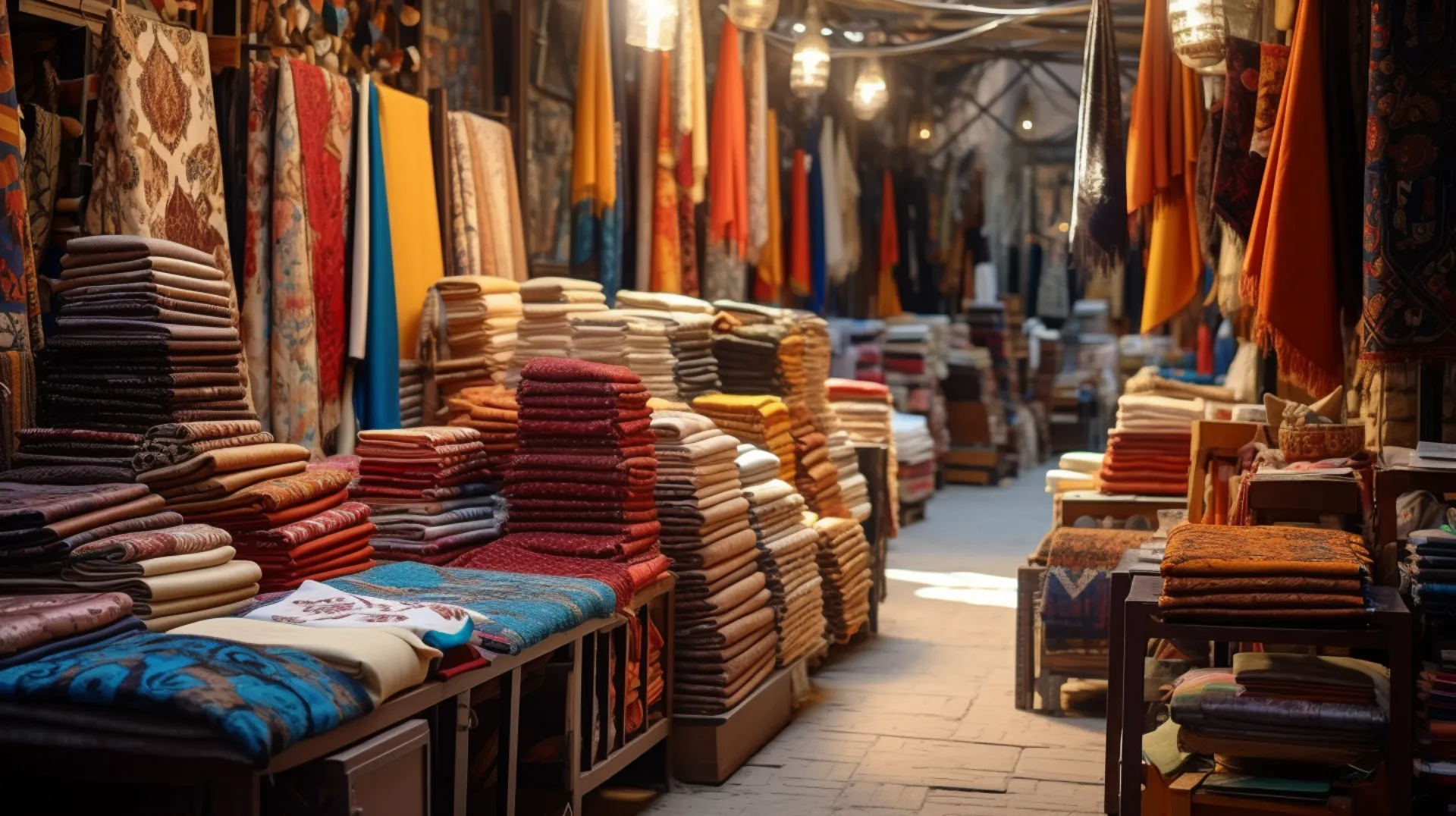
Cultural Significance of Persian Textiles
The textile market in Persia Cluster, International City, is not just a commercial hub; it’s a vibrant tapestry of Persian culture and history. As a real estate expert who has spent years in Dubai, I have developed a deep appreciation for the cultural significance embedded in these textiles, which goes beyond mere aesthetics.
Symbolism in Persian Fabrics
Persian fabrics are known for their intricate designs and rich symbolism, reflecting the country’s history and cultural depth. The patterns often incorporate paisleys, floral motifs, and complex geometric designs, each carrying meaning. For example, the paisley, or ‘both,’ a teardrop-shaped motif, is a common feature in Persian fabrics, symbolizing life and eternity. Floral motifs often represent the gardens of paradise, a significant element in Persian art and literature.
Walking through the textile market, you encounter these symbols woven into fabrics, telling stories of ancient traditions and beliefs. The colors used are also symbolic. Reds and oranges are prominent, representing joy and courage, while blues and greens symbolize tranquility and nature. These textiles are more than just materials for clothing or decoration; they are expressions of a rich cultural heritage.
Influence of Persian Art and History on Textiles
The history of Persia, now modern-day Iran, is deeply interwoven with its textile art. Historical events, royal decrees, and artistic movements have all influenced the styles and techniques used in Persian textile production. The Safavid era, for instance, saw a flourishing of Persian arts and crafts, including textiles. This period’s fine silks and carpets are renowned for their beauty and craftsmanship.
The influence of Persian art is also evident in the textiles. The intricate designs are often similar to Persian miniature paintings and ceramics. This connection between different art forms showcases the integrated nature of Persian artistic traditions.
Shopping Experience in the Textile Market
Exploring the textile market in Persia Cluster offers a unique shopping experience. The market is a labyrinth of colors and textures, with each shop offering its fabrics and designs.
Navigating the Market: Tips and Tricks
Navigating this bustling market can be overwhelming for first-time visitors. Based on countless visits, my advice is to take your time exploring the different stalls. The market is best experienced leisurely, allowing you to appreciate the variety of textiles fully. Bargaining is expected, so don’t hesitate to negotiate prices with vendors. Visiting multiple shops before purchasing is also advisable, as prices and quality can vary.
Another tip is to visit the market during weekdays or early mornings on weekends to avoid the crowds. This allows for a more relaxed shopping experience and better interaction with the shopkeepers, who are often happy to share stories about the origins and meanings of the different fabrics.
Notable Shops and Vendors
Certain vendors stand out among the many shops in the market for their exceptional collections and customer service. One such shop specializes in handwoven silk fabrics, offering a range of patterns from traditional Persian to modern designs. The owner, a knowledgeable and friendly gentleman, is always willing to explain the history and process behind each fabric.
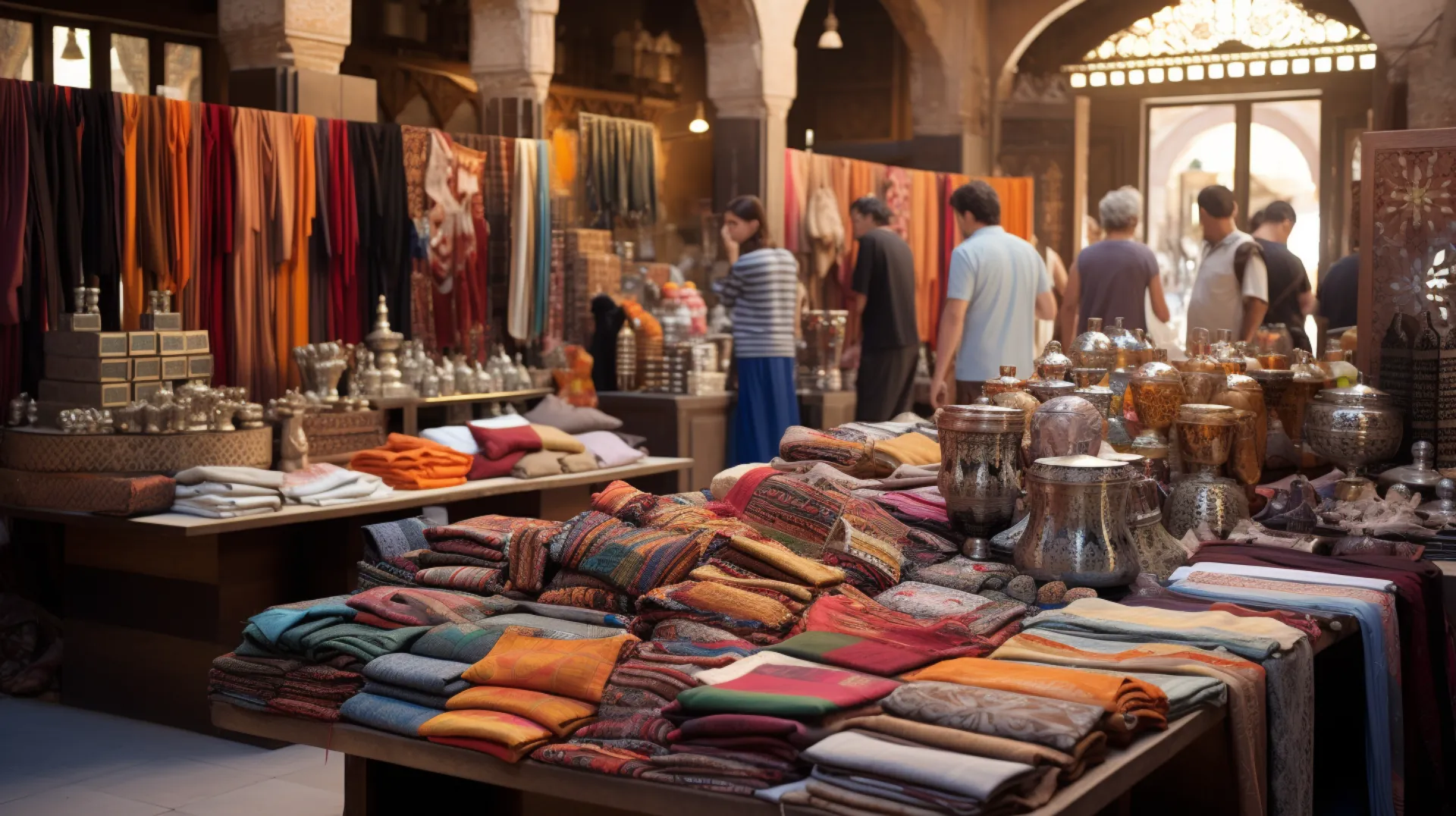
Nearby Cultural and Historical Attractions
One of the most notable attractions near the Persia Cluster is the Dubai Silicon Oasis, a technology park and free zone just a short drive away. This area is not only a hub for technology and innovation but also offers a variety of leisure and recreational activities. The park features modern architecture, green spaces, and a range of dining and shopping options, contrasting the traditional atmosphere of the Persia Cluster.
Another nearby attraction is the Dragon Mart, the largest trading hub for Chinese products outside mainland China. This massive complex is a short drive from the Persia Cluster and offers a unique shopping experience. Visitors can explore a wide range of products, from electronics to fashion, and the mall also features a variety of dining options, including Chinese restaurants and fast-food chains.
Integration with Other International City Clusters
The Persia Cluster is part of the larger International City, a unique residential development that includes country-themed clusters representing different parts of the world. Visitors to the Persia Cluster can easily explore these other clusters, each offering unique architecture, shopping experiences, and culinary delights.
For instance, the nearby China Cluster, with its traditional Chinese architecture, offers a glimpse into Chinese culture and cuisine. Similarly, the France Cluster features buildings with a distinctly Parisian feel and cafes serving French pastries and coffee. Integrating different cultures within a single development makes International City a microcosm of Dubai’s multicultural landscape.
In conclusion, the Persia Cluster and its surrounding area offer a rich tapestry of experiences, from the exquisite textiles in the market to the diverse culinary delights and nearby attractions. As a real estate expert who has spent years exploring Dubai, the Persia Cluster provides a unique blend of cultural immersion, shopping, and dining that is hard to find elsewhere in the city. Whether you are a resident, a tourist, or a curious explorer, the Persia Cluster in International City is a destination that promises a memorable experience.


